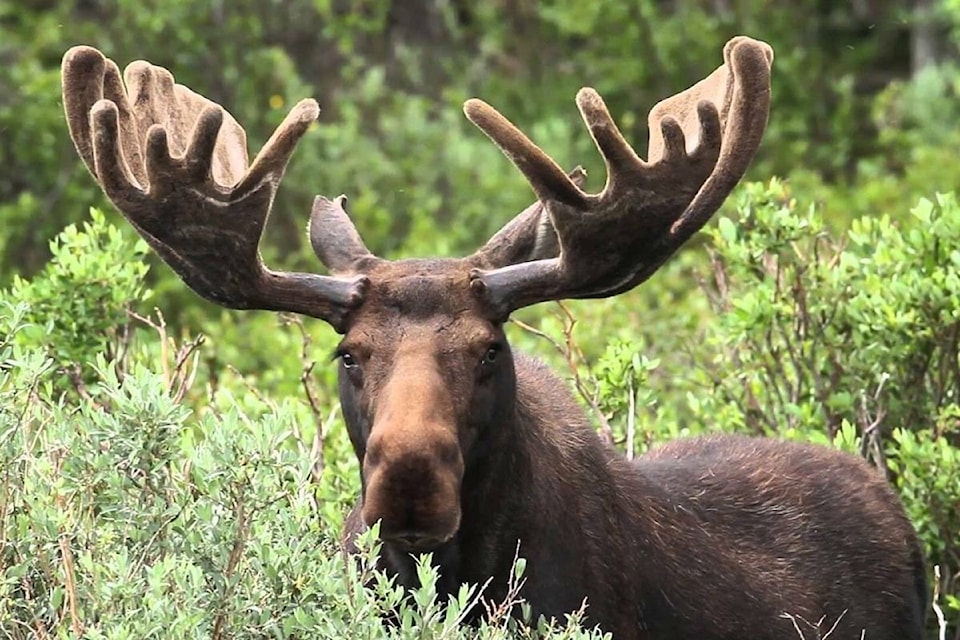The Yukon Party is wondering why the territorial government rejected the Yukon Fish and Wildlife Management Board’s advice when making changes to moose hunting.
In a Feb. 10 news release, the Yukon government announced moose hunting will be changing in three moose management units. That means permit hunt authorizations (PHA) will be required for the Sifton-Miners Range and South Canol moose management units, with 12 permits available for Sifton-Miners Range and 10 for the South Canol, as of April 1. The Mayo threshold hunt will be limited to 11 moose.
On March 15, Wade Istchenko, the Yukon Party MLA for Kluane, told the legislature the idea was pushed by the government in the 2019 wildlife regulation proposal process. In response to the notion of a PHA for South Canol, Istchenko said the Yukon Fish and Wildlife Management Board had recommended setting it aside to allow for more survey work and public consultation.
In a June 2020 letter, the board advised deferring it to the next regulation cycle.
Istchenko asked why the minister of Environment did not accept the recommendation from the board.
The board is the primary instrument of fish and wildlife management in the Yukon. Its mandate is set out in Chapter 16 of the Umbrella Final Agreement and its 12 members are appointed by the Environment minister, with half of its nominations coming from the Council of Yukon First Nations and half from the Yukon government.
Minister of Environment Nils Clarke prefaced his response by noting moose is the most harvested species by Yukon hunters and is a culturally important species.
“In some areas, the combined licensed and subsistence harvesting of moose is at or above sustainable levels, particularly in areas that are easy to access,” Clarke said.
“Limiting harvest in those moose management units is essential to ensure that moose populations stay healthy and that licensed harvest opportunities remain available over the long term.”
Clarke said the government has combined information gathered from harvesters, First Nations, and community partners with results from targeted scientific surveys so that decisions are informed with the “best and most currently available data.”
The PHA statistics for moose, which was last updated online July 30, 2021, shows there were 807 applicants and 44 permits awarded across the territory.
The areas vulnerable to over-hunting listed in the Yukon hunting regulations summary include the Kluane River and Duke River, Tatchun, Sifton-Miners Range and South Canol areas.
“The question I asked was why the minister didn’t follow the recommendation of the Fish and Wildlife Management Board, set aside the proposal, and allow for the survey work and further public consultation to work with those affected,” Istchenko reiterated.
In its letter to the minister about this proposal, Istchenko said, the board “made it clear that there was strong opposition to this measure from the public” and noted that imposing a PHA in the area would “create issues in other parts of the Yukon.”
Istchenko quoted from the letter, saying that “many First Nations and renewable resources councils have expressed serious concerns over the continued ‘whack-a-mole’ approach and urge the government to look at moose management from a broader perspective,” before re-asking the question.
Clarke cited two groups asking for restrictions.
Clarke said Ross River Dena Council has asked for licensed harvest restrictions specifically in the South Canol area and the government received a letter from the Teslin Tlingit Council chief indicating that establishing permit areas for licensed hunters would help address their concerns in the area.
“We, of course, acknowledge that this was not the recommendation of the Yukon Fish and Wildlife Management Board,” Clarke said.
“The decision to vary the board’s recommendation and go forward with a regulation change was approved, as our evidence shows that immediate regulation of harvest is necessary to ensure sustainable moose populations in this area.”
Clarke referred to a 2013 survey that he said indicated a sustainable harvest would mean 15 bulls harvested in total for both licensed and First Nation hunters in any season in the South Canol, and from 2017 to 2021 the licensed harvests alone accounted for an average of 15 bulls.
“So, while licensed harvest has been relatively consistent for many years, the estimated total harvest numbers indicate that it is at a level that is far above what is sustainable for this moose population, and licensed hunters are taking a disproportionate amount of the sustainable harvest,” Clarke said.
“To put it another way, we need to see the moose population — my scientists say — roughly double in size from the 2013 survey for the current harvest numbers to be considered sustainable.”
In the government release, there is a population of roughly 70,000 moose in the Yukon.
Istchenko said his party is concerned the government is not fully considering the broader impacts of their decisions on wildlife management.
“Limiting access in one area creates pressure in another,” he said.
“In their letter to the minister about the particular proposal, the [Yukon] Fish and Wildlife Management Board said the lack of timely and concrete data in the proposal has eroded public confidence in the merit of the proposal and the need for a regulatory change. So, if the board thought that pushing through this proposal in 2020 was eroding public confidence, what impact does the minister expect that pushing through this proposal two-and-a-half years after the public consultation will have?”
Clarke said last year’s budget set aside $700,000 to $750,000 for aerial moose surveys.
“I am also advised by my department that funds have been set aside to do an aerial survey of the South Canol in the upcoming season. We will be guided by that information as well,” Clarke said.
“I will be guided by science on this, and I said that we are committed to doing the surveys, which are expensive, but they will provide the data to all stakeholders, as it becomes available.”
Contact Dana Hatherly at dana.hatherly@yukon-news.com
